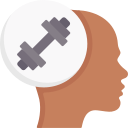Today’s chosen theme is: The Science Behind Meditation and Exercise Synergy. Explore how breath, focus, and movement combine to sharpen the mind, strengthen the body, and create sustainable energy. Subscribe and join the conversation.
Neuroscience: How Breath and Motion Reshape the Brain
BDNF, neuroplasticity, and mindful movement
Exercise boosts BDNF, while meditation fine-tunes attention and reduces mental noise. Together, they create a fertile state where neurons wire more efficiently, consolidating skills, cues, and movement patterns with less cognitive friction.
Default Mode Network and task-positive balance
Meditation downshifts rumination in the Default Mode Network, while exercise lights up task-positive systems. This balance supports present-moment awareness, cleaner decision-making, and steadier pacing during demanding sets or long runs.
Attention, interoception, and motor learning
Mindfulness enhances interoceptive accuracy, helping you sense breath, heartbeat, and tension. That awareness refines technique, reduces wasted effort, and accelerates motor learning when drills or lifts require precise, repeatable execution.
Hormones and Homeostasis: The Calm–Energy Loop
Cortisol modulation for steadier training
Pre-session mindfulness can lower anticipatory cortisol spikes, easing performance anxiety without dulling readiness. The result is steadier effort, improved pacing, and less post-workout fatigue fog after high-intensity intervals or heavy lifts.
Endorphins, eCBs, and the exercise afterglow
Endorphins and endocannabinoids elevate mood after workouts. A short meditation extends that afterglow, stabilizing emotions and reinforcing positive associations, which helps adherence when motivation dips on dark mornings or stressful weeks.
Autonomic balance and recovery signaling
Slow breathing nudges parasympathetic tone upward, improving heart rate variability. Pairing this with cooldown movement guides the body toward recovery, signaling it is safe to repair, rebuild, and sleep deeply tonight.
Lowering perceived exertion without losing intensity
Mindfulness redirects attention toward breath cadence and technique cues, shifting focus away from discomfort. Athletes often hold target intensity longer because the sensations become navigable, not overwhelming, preserving quality in later sets.
Pacing intelligence and fewer mental errors
Meditation trains non-reactivity, reducing costly surges and abrupt slowdowns. Smarter pacing conserves glycogen, limits premature burnout, and protects form, especially during threshold intervals, tempo runs, or high-volume complexes under fatigue.
Resilience during inevitable dips
When the mind wobbles mid-session, a practiced breath cue resets attention quickly. This micro-reset transforms a looming blowup into manageable discomfort, salvaging the session and building durable, transferable mental toughness.

Maya’s threshold breakthrough
Before tempo runs, Maya practiced four minutes of breath-focused meditation. Her pace variability shrank, and she finally held threshold without panic. She credits softer self-talk for unlocking steadier, repeatable effort.

Jared’s safer heavy triples
Jared added three mindful breaths before each deadlift set. The ritual reduced rushed setups, improved bracing awareness, and eliminated his recurring lower-back tweak during final reps at challenging loads.

Lena’s return from burnout
After overtraining, Lena rebuilt with gentle cycling plus daily body scans. The pairing restored curiosity and joy, revealing early fatigue signals she once ignored. Recovery quickened, and workouts felt playful again.

